Let’s start with Chenopodium by doing the easy ones first. These can be identified without any real risk of error by jizz alone. I’ll ignore the definitions of the 5 new genera for the time being. 



Easiest of all is Strawberry-blite (Chenopodium capitatum) with its succulent, bright red tepals. This is by far the rarest of all the distinctive species. 

Talking about colourful, the ornamental Quinoa are pretty unmistakable (Chenopodium quinoa). Green plants of this species, however, and much more tricky and certainly can’t be done by jizz. 

Another easy one is Chenopodium polyspermum. It is a pinkish plant with oval leaves that look as if they have a thin black line drawn around their margins. This is a common and abundant seed-bank species, coming up with other annual plants following soil disturbance 

Next is a plant with a brilliant name: Good King Henry (Chenopodium bonus-henricus). This is immediately recognisable by feel: it is the ‘mealiest’ of all the edible weeds. When teaching it, I got the students to say “feel the meal”, as they rubbed the leaf. It seemed to work. 

The fifth one you can do by jizz is Chenopodium rubrum (one of the commonest residents of manure heaps). This has the most ‘toothy’ of all the leaves, and is dark, glossy green with red-striped stalks. 

A Goosefoot with mealy but narrow, finger-like leaves is most likely to be C. ficifolium. It has big basal lobes, and the terminal, finger-like part of the leaf is at least twice as long as the lateral lobes. Don’t confuse it with Atriplex patula (which has bracteoles) 

Finally, and most tantalizing of all, is the famous Fat Hen (Chenopodium album). No weed shows more variation in size or in leaf shape. Some of this is genetic, but much of it is phenotypic plasticity, affected by nutrient supply, light and watering. A common seed-bank species. 

When the molecular phylogeny work was nearing completion, it became clear that the genus Chenopodium was polyphyletic. Not only that, but the family Chenopdiaceae proved to be unsustainable. 

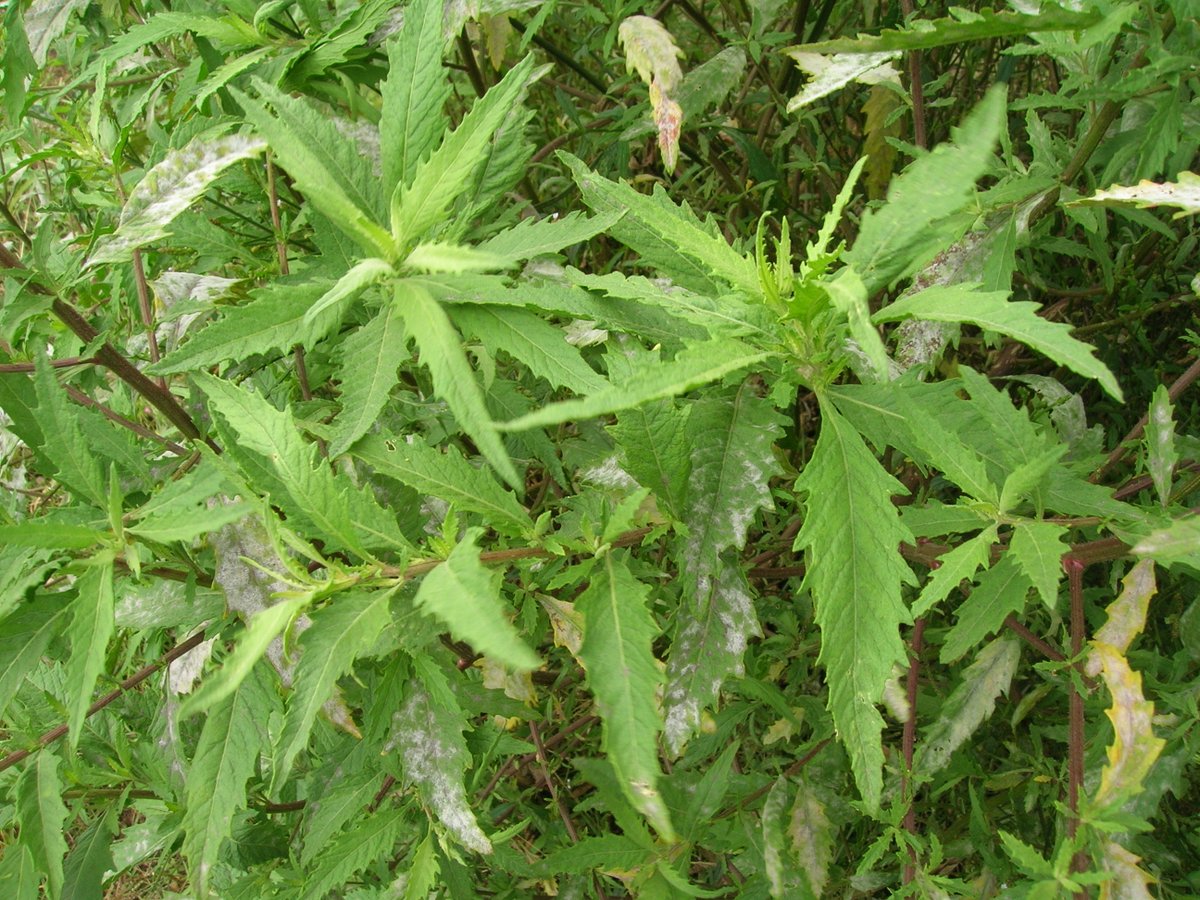

The family Chenopodiaceae was incorporated into Amaranthaceae. The genus Chenopodium survived, but previous members of the genus ended up in 5 different genera: Lipandra, Chenopodiastrum, Oxybasis, Blitum and Dysphania. 



Blitum. The 2 members of this genus could hardly be more different from one another. We've met both already: Blitum capitatum (left) and B. bonus-henricus. Good King Henry is a rhizomatous perennial (most are annuals). 



Lipandra. There's just 1 species and we've met it already. L. polysperma. The distinguishing feature is that the genus has 5 tepals and they are fused for much less than half their length. The seed coat has raised radial, sinuate striations. 



Oxybasis. There is 1 common species (we've met O. rubra already) and 3 rare ones: O. glauca (left), O. chenopodioides (top right) and O. urbica (bottom right). The fruiting perianths are longer than wide, with vertical (not horizontally) held seeds. 




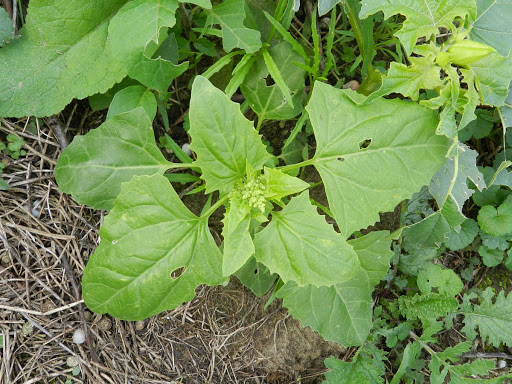
A really important feature is the way that the seeds are held within the fruiting perianth. Under as high power as you can muster (x 20), decide whether the seeds are held vertically (left) or horizontally (right). Don’t even think about doing this before the seeds are ripe. 



Oxybasis glauca has leaves that are green above but mealy grey below (contrasting, not similar above and below). O. rubra has tepals of lateral fruits fused < halfway and strongly toothed (almost lobed) leaves. 


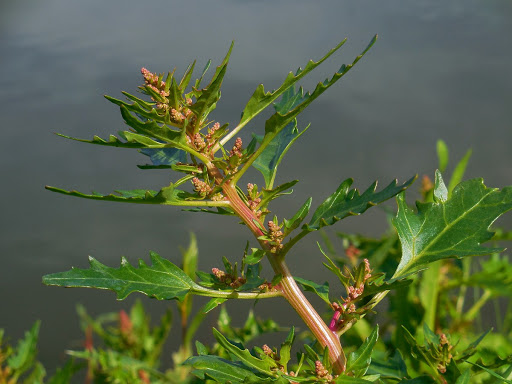
Oxybasis chenopodioides has entire or only slightly toothed leaves and fruiting tepals fused almost to the top. O. urbica has toothed triangular to trullate leaves and fruiting perianths that are wider than they are long. 



Dysphania. There were many more species when wool-aliens were more frequently imported. These days you might find just 2: D. ambrosioides has sessile glands on hairless tepals and linear, strongly toothed leaves; D. botrys has hairy tepals and oak-like leaves. 



Chenopodiastrum. There are 2 species, both uncommon. They have horizontal seeds, and fruiting perianths that are wider than long. C. hybridum has weakly cordate leaves at the junction with the petiole, while C. murale has leaves that are cuneate at the junction with the petiole 



This is the point at which things get a great deal more difficult: the rump of the genus Chenopodium. The truth is, most of these 12 species look more or less like Fat Hen, and Fat Hen has forms that look just like most of the other 11 species. So brace yourself. 



It would be a good idea if you went outside at this point and came back with a specimen of Fat Hen (Chenopodium album). We can then talk through its features (such as they are), so you get a feel for the terminology and the issues. 

Start by removing some ripe seeds, and look at them under the highest magnification and best light you can muster. A dissecting microscope is best (but x20 if that's all you've got). If you can't find any ripe seed then stop, and go and do something else with the rest of your day 



Use your micro-ruler to measure (to the nearest 0.1 mm) the maximum diameter of the seed and the minimum diameter. Work out the length to width ratio. Describe the surface of the seed Describe the edges of the seed and their sharpness or any ridges that there are. 

Here's what you should be seeing on Chenopodium album seeds. The ratio of the longest to shortest diameters is less than 1.15 (i.e. almost round). The edge of the seed (viewed from sideways on) in its narrowest profile is subacute (not obtuse or rounded). The seed coat is smooth 

Now have a close look at the tepals, and assess the degree to which they are fused. You can see (below) that they are fused to less than half way. Look for a keel: it can be indistinct (as here) or moderately prominent. 

Describe the mealiness of the inflorescence. Without experience this is always tricky, because you need to distinguish between "densely mealy" (right) and "variously mealy" (left). I know. Get used to it. 

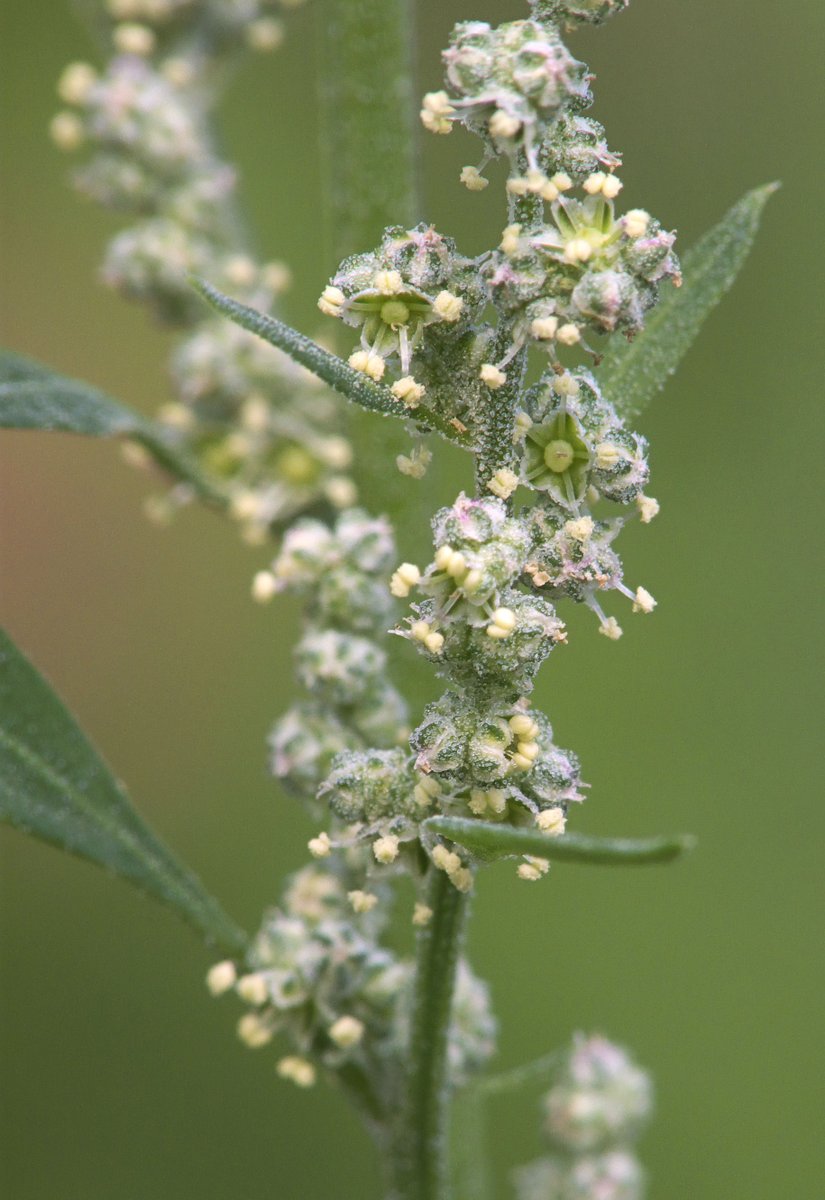

Leaf shape is more or less useless in Chenopodium album because it's so variable, even within the same plant. Base broadly cuneate (not cordate or truncate); teeth small, regular; size 10-40 x 2-25mm; pale or medium green above, paler beneath; petiole 0-15mm (!), hairy both sides 

Now you can embark on the key for the species within the new, narrower Chenopodium. The first two are easy: does your plant smell of rotting fish (c. vulvaria) or are the leaves narrow and mucronate with 1 pair of lateral veins and a short petiole (<10mm) which is C. pratericola? 



The first important question looks at the seeds: are there conspicuous regular pits, delimited by a pronounced reticulum of ridges (left) or is the seed-coat featureless or irregularly pitted (right) 



First those with conspicuous regular pits, delimited by a pronounced reticulum. Chenopodium berlandieri has tepals with a strong wing-like keel and trullate-ovate leaves (left). C. ficifolium has obvious basal lobes and a long, finger-like leaf tip, with tepals weakly keeled. 



Next those with the seed-coat featureless or irregularly pitted. The massive (2m) red-purple tinged plant with leaves up to 14cm (always some leaves > 6cm) is Chenopodium giganteum (Tree Spinach). It has big leaf teeth but no real lobes. 



The next one is real head-scratcher. Is the pericarp (the seed coat) regularly honeycombed by raised cell outlines (left) or is it smooth to granulose (right) ? It might be simpler to ask are you looking at Quinoa or not ? 



There are 2 with regularly honeycombed pericarp: the common crop Quinoa with a dense, top-heavy inflorescence (illustrated), or the rare C. bushianum which has a tapered, droopy inflorescence, often blackish green (sorry, no photo) 

The remaining 5 species are the real Fat-Hen-Lookalikes. But the first one is easy because it has broad leaves (length is not much, if at all, greater than maximum width). The tepals are fused as much as half way up. This is Chenopodium opulifolium. 



Next, measure the ratio of seed length to width. If it is more than 1.15 you have Chenopodium strictum. The leaves are narrowly oblong with parallel sides, not lobed but with shallow teeth. 

Now consider the edges of the seed (seen sideways on): if they are sharp (sub-acute) you have Fat Hen Chenopodium album). If they are obtuse or rounded, something else (see below) 

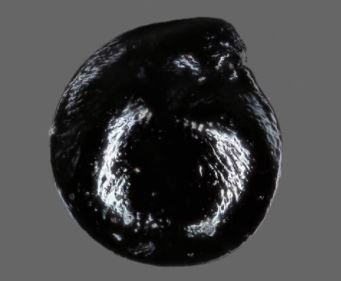

Finally, look at maximum seed diameter: more than 1.25mm is Chenopodium suecicum (left); less than 1.25 is C. probstii (but this flowers so late it often gets frosted before the seeds are ripe). The tepals are well keeled in C. suecicum, just slightly in C. probstii 



So that's it for Chenopodium (12 spp. left in the reduced genus), plus Lipandra (1 sp.), Chenopodiastrum (2 spp.), Oxybasis (4 spp.), Blitum (2 spp.) and Dysphania (6 spp., but only 2 seen in recent years). Good luck. Don't bother to collect a specimen unless it has ripe seeds 







• • •
Missing some Tweet in this thread? You can try to
force a refresh



























